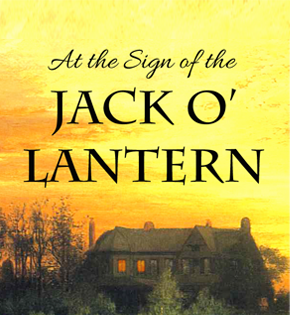“The Man Who Broke the Bank at Monte
Carlo,” the song with which George Amberson Minafer loudly serenades his family
in The Magnificent Ambersons, was written
in 1892 and remained popular for a number of decades afterward, so it was most
likely familiar to the readers of Booth Tarkington’s novel in 1918, and perhaps to moviegoers who heard it sung in the 1942 film adaptation as well. There’s a colorful story behind the song, which is
believed to be inspired by a real-life gambler who succeeded in spectacularly
breaking the bank at the famous Casino Monte Carlo in Monaco. (In roulette,
“breaking the bank” means winning more chips than are available at the table.) Here's a clip from the 1942 film:
The man in question was Charles
Deville Wells (1841 – 1922), a gambler and confidence trickster who arrived in
Monte Carlo in 1891 supplied with money he had swindled from investors in a
bogus invention scheme. Wells broke the bank twelve times in one day, converting £4,000
into winnings of 1 million francs. In 1892, songwriter Fred Gilbert wrote “The
Man Who Broke the Bank at Monte Carlo,” which was most likely inspired by Wells
and which helped to make him an even bigger celebrity—it’s been said that
whenever he entered a nightclub the band would begin playing the song. It was
popularized by English music-hall singer and comedian Charles Coborn (not to be
confused with American character actor Charles Coburn), for whom it became a
signature number. Here’s an old recording of Coborn performing the complete
song:
Charles Wells’s fame and fortune did
not last. He returned to Monte Carlo twice more—the first time he made another
million francs in three days, but on the second his luck ran out and he lost
all of his money—or rather, the money belonging to more investors in another
one of his schemes. He was arrested at Le Havre and extradited to England,
where he served eight years in prison for fraud. After serving two more
sentences in England and France, he eventually died penniless in Paris. The
song that he inspired proved much more fortunate for Charles Coborn, who
estimated that he performed it 250,000 times in the course of his career, in fourteen different languages! In 1934, at age 82, he sang it in English and French in
the British film Say it With Flowers.
There was also an American musical comedy titled The Man Who Broke the Bank at Monte Carlo filmed in 1935, but the
plot bore little relation to the song or to the story of Charles Wells. To many
modern-day readers and film fans, its use in The Magnificent Ambersons may well be the most memorable.
POSTED BY: Elisabeth Grace Foley
POSTED BY: Elisabeth Grace Foley
The Magnificent Ambersons by Booth Tarkington
Professionally edited and formatted for today's readers!
Get the Legacy Vintage Collection Enhanced eBook Edition for $1.99!























